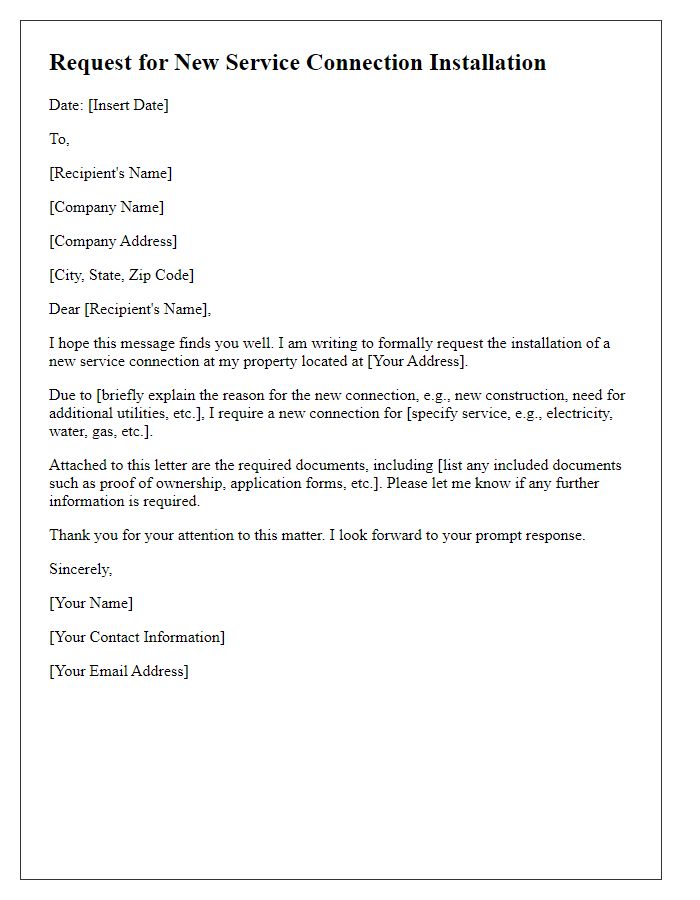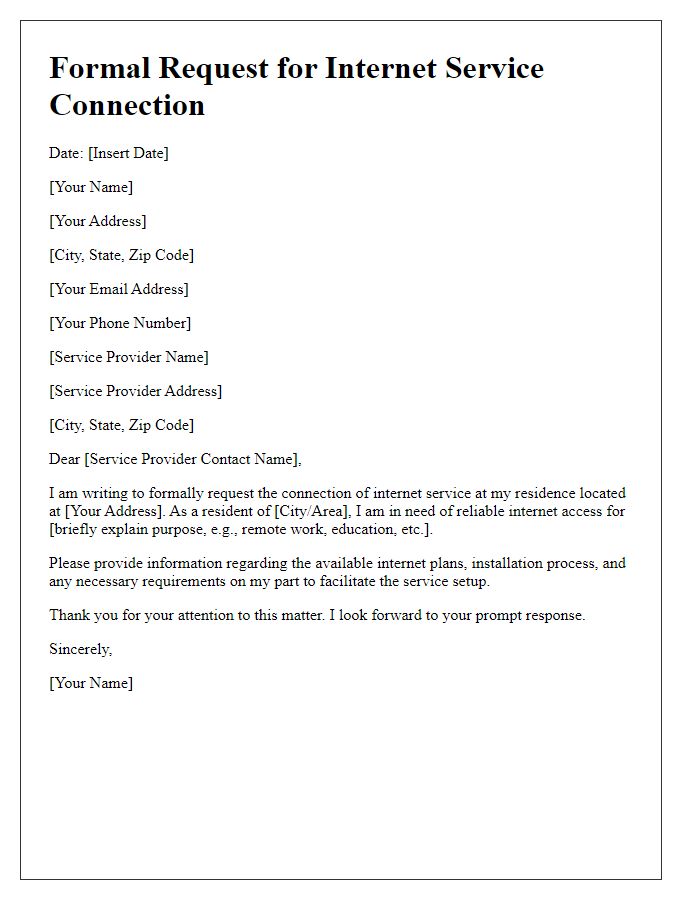Are you thinking about getting a new service connection for your home or business? It can feel overwhelming with all the details you need to consider and the paperwork you have to fill out. But don't worry, we've got you covered with a simple guide that breaks down the process step-by-step. So, grab a cup of coffee and dive into our article for all the insights you need to make your new service connection hassle-free!

Applicant Information
To obtain a new service connection, applicants must submit complete information including full name, residential address (including city and zip code), contact number, and email address for correspondence. Additionally, applicants should provide identification details such as a government-issued ID number or social security number. If applicable, include the type of service requested (e.g., water, electricity, gas) along with any relevant documentation (e.g., property deed, recent utility bills) to verify ownership or residency. It is essential to specify any special requirements or considerations that may affect the service connection process, ensuring a smooth application experience.
Service Description
New service connection requests for utilities such as water, electricity, or gas often involve a structured application process. Service Description outlines specifics regarding the requested utility, including address information (such as street name, city, and zip code), the type of service (single-family residence, multi-family dwelling, commercial premises), and the anticipated date of connection. Customers must provide details about their consumption needs, permitting processes, and any special requirements or equipment (like smart meters or high-capacity pipelines). Additionally, utility providers might require documentation, such as identification and proof of ownership or lease agreements, to process the request efficiently.
Property Details
Property details, including the location address (such as 123 Maple Street, Springfield), size (2,500 square feet), and zoning classification (residential or commercial), play a crucial role in evaluating new service connection requests. The property type, whether it's single-family residential, multi-unit dwelling, or commercial establishment, influences service requirements. Additionally, surrounding infrastructure, like proximity to utility lines and existing service connections in the neighborhood, can expedite the approval process. Permitting specifics may vary depending on local regulations, which could include environmental assessments or adherence to city planning codes. Accurate information regarding the property owner (such as names and contact details) and intended use of the service are essential for timely processing of the request.
Preferred Connection Date
To initiate a new service connection request, customers should specify a preferred connection date that aligns with their schedules. Selecting an appropriate connection date ensures a smooth installation process and allows for timely coordination with service technicians. Customers must also consider factors such as potential waiting periods, availability of necessary equipment, and regional service capacity, as these aspects can influence the actual activation timeline. Providing a preferred connection date enhances communication with service providers, facilitating efficient planning and minimizing disruption for households or businesses.
Contact Information
A new service connection request often requires detailed contact information that includes the full name of the requester, physical address complete with postal code, email address for digital correspondence, and phone numbers (both mobile and landline) for prompt communication. Additionally, specifying the preferred method of contact can streamline the process. Providing details about the intended service location, such as the service provider's service area (e.g., city name, neighborhood) helps in better processing the request. Clear identification of any urgency or specific requirements related to the service connection can also enhance response efficiency.
Letter Template For New Service Connection Request Samples
Letter template of notification for new telecommunications service connection













Comments